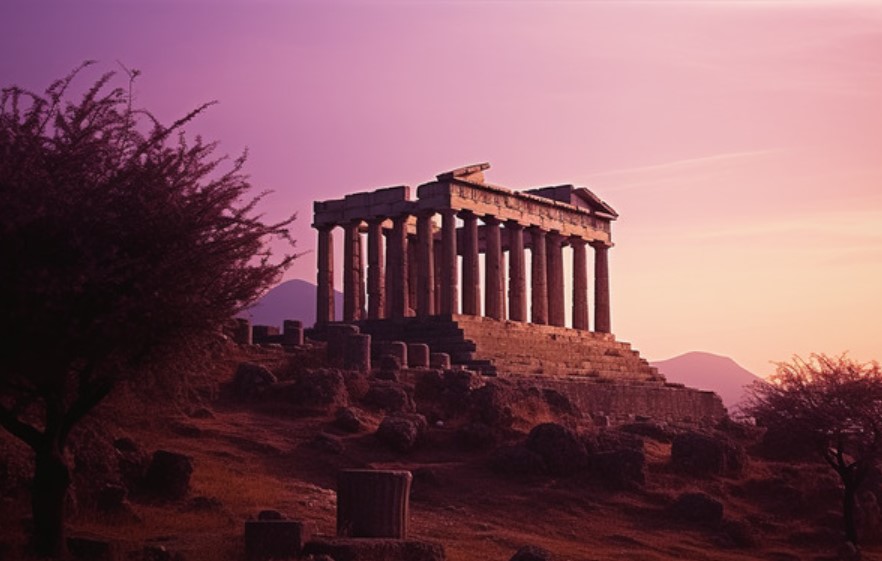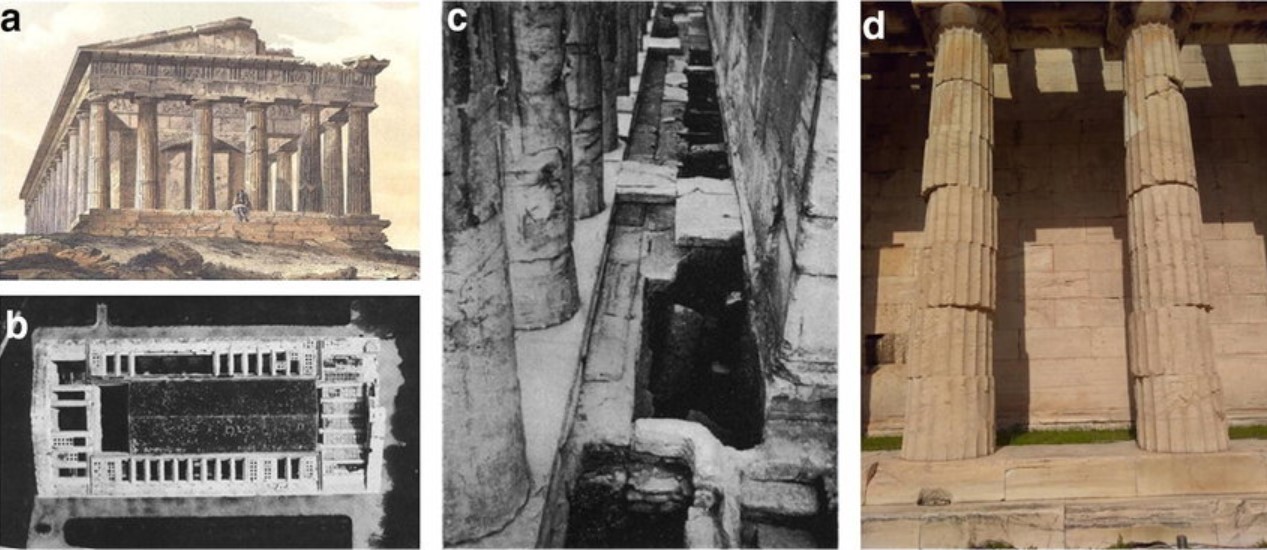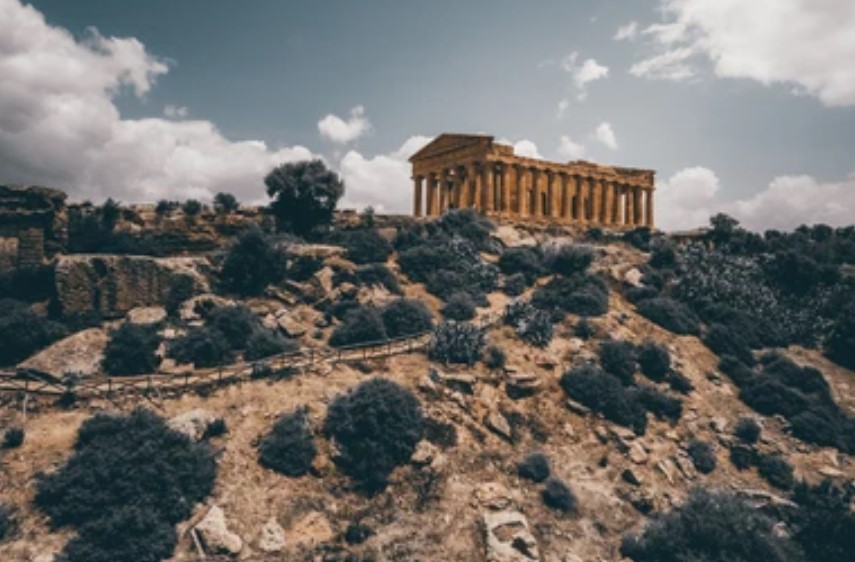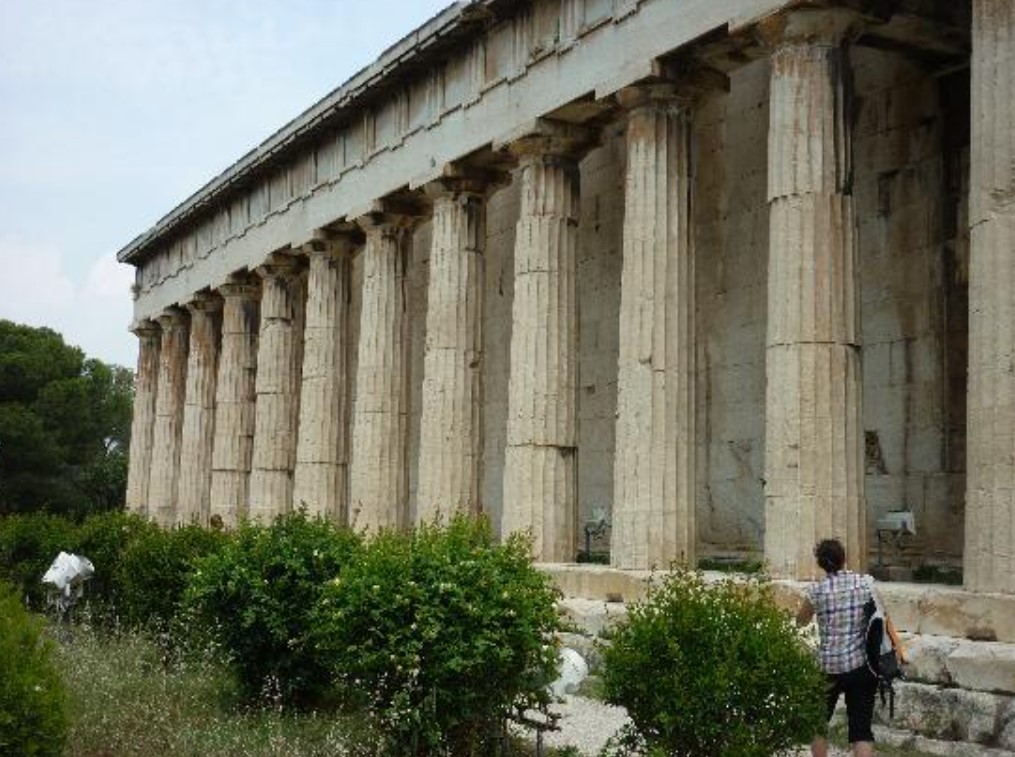Hephaisteion, also known as “Theseion”, is one of the most iconic and best preserved temples in Athens. Located on the Agoraios Colonos hill, west of the Ancient Agora, the temple has fascinated archaeologists, architects and visitors for centuries. Its significance lies not only in its architectural brilliance but also in its historical and cultural value. Let’s take a closer look at archeology.dulichvn.net the remarkable Hephaisteion, a masterpiece of ancient Greek architecture.
Historical Context and Location The Hephaisteion
Built Between 460-415 BC
The Hephaisteion was constructed between 460 and 415 BC, during the classical period of Ancient Greece. It stands as a testament to the architectural skill of its time. The temple is believed to have been built to honor Hephaestus, the god of metalworking, craftsmanship, and fire, as well as Athena, the goddess of wisdom. The temple’s dedication to these gods highlights the importance of craftsmanship and industry in ancient Athenian society.

Located in the Ancient Agora of Athens
The temple is situated on the Agoraios Colonos hill, overlooking the Ancient Agora. The Agora was the heart of Athens’ civic and political life, and the Hephaisteion was strategically placed to be seen from across the Agora. This location gave the temple a central role in the everyday life of the Athenian people, emphasizing its significance in the social and religious landscape of the time.
The Role of Hephaestus and Athena
The Hephaisteion was primarily dedicated to Hephaestus, who was considered the patron god of metalworkers and craftsmen, symbolizing the city’s appreciation for work and the skill involved in creating tools and structures. Athena, his counterpart, was also honored in the temple. The pairing of these two deities reflects the balance between intellectual and practical skills in Athenian culture, with both being central to the city’s artistic and intellectual achievements.
Architectural Features of the Hephaisteion
Doric Style and Hexastyle Design
The Hephaisteion is a perfect example of Doric architecture, one of the three classical orders of ancient Greek architecture. It features a hexastyle design, meaning that it has six columns along its front, a defining feature of its symmetrical and balanced look. The Doric style is characterized by its simplicity, with sturdy columns that taper slightly toward the top and lack any elaborate decoration on the column shafts.

Dimensions and Structure
The temple’s overall dimensions reflect its grand scale and design. On each side, there are 13 columns, and it has a width of six columns across its front, resulting in a rectangular layout. The temple’s structure is divided into three distinct sections: the pronaos (front porch), the main nave, and the back building. The pronaos provided a ceremonial entrance, while the nave housed the temple’s inner sanctum. The back building likely contained additional storage or chambers, though the precise use of this space remains a subject of study.
Possibly Designed by Architect Iktinos
While there is no definitive proof, it is believed that Iktinos, a well-known architect of ancient Greece, may have designed the Hephaisteion. Iktinos was responsible for the construction of other notable temples, such as the Temple of Poseidon at Sounion and the Temple of Nemesis at Ramnunta. His role in designing the Hephaisteion would have further cemented the temple’s status as a work of architectural mastery.
See more: The Mystery of the Barabar Caves: Ancient Perfection
The Hephaisteion’s Construction and Influence
Began Before the Parthenon
Construction on the Hephaisteion began as early as 450 BC, which predates the construction of the Parthenon. This makes the Hephaisteion one of the earliest examples of classical Doric temple design in Athens. While the Parthenon is often regarded as the pinnacle of ancient Greek architecture, the Hephaisteion shares many similar stylistic features, showcasing the evolution of Greek temple design.

Engineering Excellence
The engineering behind the Hephaisteion demonstrates the advanced building techniques of the time. The precise alignment of the columns, the use of large stone blocks, and the careful planning of the structure’s dimensions all point to the expertise of the architects and builders. The temple’s design allowed it to withstand the test of time, which is why it remains one of the best-preserved ancient Greek temples today.
Influenced Future Temple Designs
The Hephaisteion’s architectural style influenced future temple designs in ancient Greece. Its balanced proportions, Doric columns, and symmetry set a precedent for later temples in Athens and beyond. Architects and builders in subsequent centuries would have looked to the Hephaisteion as a model of classical Greek temple design.
See more: The Mysterious and Abandoned Porto Flavia: A Forgotten Piece of Engineering History
The Hephaisteion’s Preservation and Legacy
A Symbol of Ancient Athens
Today, the Hephaisteion stands as a symbol of ancient Athens, reflecting the city’s wealth, power, and cultural achievements. It remains one of the most important and best-preserved monuments from ancient Greece. Visitors to the Ancient Agora can marvel at its architecture and reflect on the religious and civic life that centered around this awe-inspiring temple.

A Testament to Greek Architecture
The Hephaisteion is a testament to the extraordinary skill of ancient Greek architects and craftsmen. It offers modern-day visitors a rare opportunity to appreciate the grandeur and sophistication of ancient Greek architecture. Its preservation allows us to study the construction techniques of the time, providing valuable insights into the engineering and artistic practices of the ancient Greeks.
An Iconic Landmark in Athens
As one of the most iconic landmarks in Athens, the Hephaisteion continues to attract tourists, scholars, and history enthusiasts from around the world. Its enduring beauty and historical significance ensure that it will remain a crucial part of the Athenian landscape for generations to come.
Conclusion
The Hephaisteion is a remarkable example of ancient Greek architecture, offering a window into the artistic and cultural achievements of Athens. From its impressive Doric columns to its carefully planned proportions, the temple stands as a lasting tribute to the ingenuity of ancient architects. Whether you are an architecture enthusiast, a history lover, or simply someone looking to explore the wonders of ancient Greece, the Hephaisteion is an essential stop on your journey through the history of one of the world’s greatest civilizations.

CÁC TIN KHÁC
Mark Twain & Olivia Langdon: A 36-Year Love Story Filled with Laughter and Devotion
The Tollund Man: A 2,400-Year-Old Mystery Preserved in a Danish Bog
Skara Brae: Scotland’s Hidden Neolithic Village
Porta Nigra: The Hidden Depths of Trier’s Iconic Roman Gate